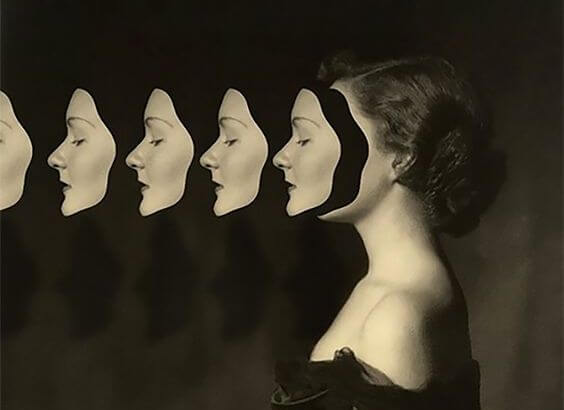Erving Goffman and the Social Action Theory

Surely this has happened to you too: every time you see a friend or acquaintance, he tells you that life is going great. If you pay attention, any time you get on social media, you will find an infinite number of profiles that reflect prosperity. To gain perspective in the face of this partial and skewed showcase, it can be interesting to see the world from the point of view of Erving Goffman and his social action theory.
Goffman created a great work in which he tackled a complex theme: the creation of the human personality through environmental interaction. For this sociologist, a good part of each person’s behavior depends on their relationships with others.
Who is Erving Goffman?
Before continuing, it is worth shedding a little light on the figure of Erving Goffman. This man was a renowned Canadian psychologist and sociologist who died in 1982. He left a great legacy that we will dive into today.

Throughout his professional career, he devoted much of his energy to observing human behavior. From his work arose theories about social interactions and the place that each person takes in a social hierarchy.
During his active period, he published several prestigious books, such as Stigmas (1963), Public Relations (1971) or The Presentation of the Self in Everyday Life (1957).
The social action theory by Erving Goffman
We now enter into the subject of Erving Goffman‘s social action theory. As we have said, he defends the theory that human behavior depends on personal scenarios and relationships. Therefore, we are all immersed in a constant handling of our image before the rest of the world.
This interaction that each individual performs with his environment pushes him to seek the definition of each situation with the aim of achieving control over it. In this way, we try to handle the impressions that others are going to form about us.
We could say that we are actors playing our role in front of an audience of one or more people. It seems obvious to believe that Goffman is right in this detail, because we all try to project an image favorable to others. Whether we seek to like, please, sympathize, be hated … we all try to be consistent with the intended image.
For Goffman, and always under the prism of his social action theory, what we really want is to create impressions that form public disturbances, because we think that these disturbances will be beneficial for us. We try to reflect the aspects of our identity that we wish to communicate, and they also show our intentions.
In their acting capacity, individuals are concerned about maintaining the impression that they meet many rules and can judge them.
-Erving Goffman-
The public image we project
Under the theoretical parameters of Goffman, each individual manages their relationships by trying to project their ideal public image. In this way, they create successive projections that will be present in one way or another in the communication with others.
To understand it better, let’s say we want to like and get along with someone. Therefore, we will create and project an image toward that person with what we consider to be the best of ourselves.
Going deeper into this theory and its examples, psychologists like Rafael Ramírez Lago consider it excellent to study the projections that we put into our social media profiles. We could say that we seek to create our own presentations that reflect a positive image through videos and photographs that show our happiness.

Thus, the theory of social action would explain the different roles we create depending on the demand of each of our social interactions and the image we want to project. We would seek benefits, find a good social accommodation and, ultimately, locate our place in the world.
The game of representation
However, for Goffman, these types of interactions give way to a game of representation. These representations would never transmit our real identity, but the identity we dream of, want or desire.
In other words, you could consider someone to be a kind of public relations version of himself. We use our interpretation as a marketing campaign to show others our best.
As actors we are merchants of Morality.
-Erving Goffman-
Finally, we wanted to point out that Goffman’s social action theory is aesthetic and raises some questions. Are we really like that? Does our social world focus on the image we want to project? Are social networks an example of this theory? We don’t have the answers, but the fact that there are 2 billion people on Facebook and most of these profiles have a positive bias may be a sign that this psychologist was not misguided.
This text is provided for informational purposes only and does not replace consultation with a professional. If in doubt, consult your specialist.








